In today’s competitive global trade environment, international standards and certifications are recognized as one of the most important tools for building trust and ensuring quality. Across various industries—particularly in the leather and leather goods sector—the role of these certifications goes far beyond being just official documents; they have become the common language between producers and global buyers, paving the way for entry into target markets.
In the leather products market, international customers—whether large retailers or luxury brands—look for evidence that proves compliance with global benchmarks of quality, environmental sustainability, safety, and ethical production, even before considering design and aesthetics. This evidence is typically presented through credible certifications and formal standards.
The importance of certifications can be examined from two perspectives:
- Stricter legal requirements: Many countries prohibit the import of leather products without compliance with regulations such as REACH (European Union) or OEKO-TEX®.
- Changing consumer behavior: A new generation of buyers in Europe, the U.S., and even Asia place strong emphasis on brand values, corporate social responsibility, and adherence to sustainability principles.
Therefore, for an Iranian producer or exporter aiming to introduce their products to international markets, holding valid certifications is not only a condition for market entry but also a competitive advantage.
On the other hand, trust—as a key factor in international trade—is built not only through product quality but also through transparency, official documentation, and adherence to recognized standards. A manufacturer can gain buyer confidence and simplify negotiations by providing independent audit reports, technical documents, and certification records.
This article will walk step by step through the critical certifications and standards in leather exports—from quality management certifications to environmental and ethical requirements. We will also highlight the role of the specialized platform MMF Market in assisting Iranian producers to obtain these credentials and successfully enter global markets.
2. Types of Essential Certifications in Leather Exports
International certifications in leather exports serve as passports to global markets. Without them, even products of the highest quality may be barred from accessing many of the world’s major markets. These certifications reassure buyers and regulatory bodies that production processes, raw materials, and working conditions align with international criteria.
These certifications can be grouped into four main categories:
2.1. Product Quality Certifications
This category demonstrates systematic adherence to quality principles throughout the entire production process.
- ISO 9001 – Quality Management System
Focuses on process improvement, quality control, and customer satisfaction. A producer holding ISO 9001 proves that every stage of production—from sourcing raw materials to packaging—is continuously monitored and evaluated.- Advantage: Builds customer trust, reduces production errors, and improves efficiency.
- ISO 14001 – Environmental Management
Demonstrates a manufacturer’s commitment to reducing environmental impact, optimizing resource use, and managing waste.- Advantage: Easier access to European and North American markets; enhances brand image as a “green” producer.
- ISO 45001 – Occupational Health & Safety
Ensures safe and healthy working conditions for employees.- Advantage: Reduces workplace accidents, improves workforce productivity, and ensures compliance with labor laws in destination countries.
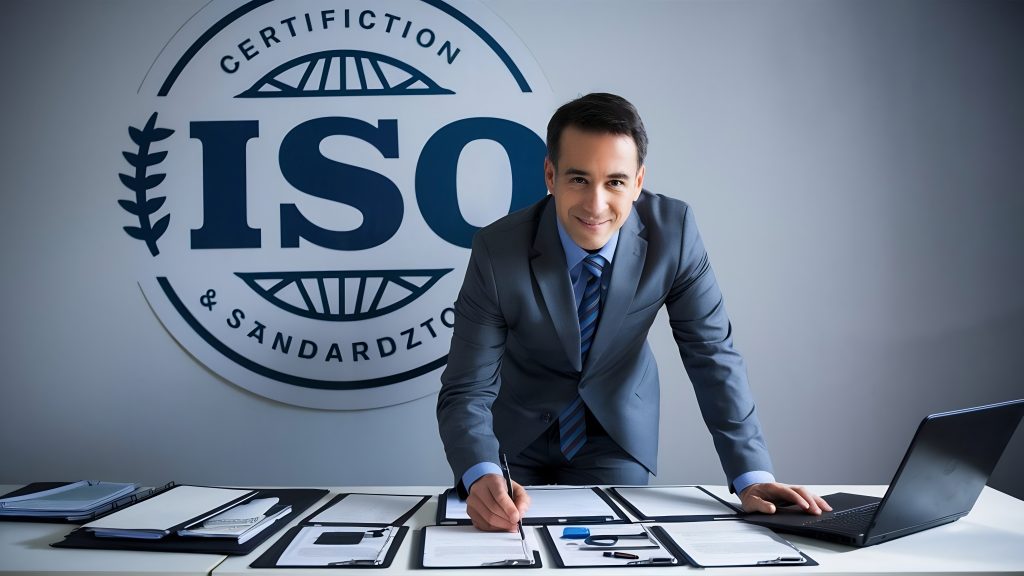
2.2. Environmental and Sustainability Certifications
With growing global concerns about the environment, these certifications have become essential—particularly for luxury brands and advanced markets.
- Leather Working Group (LWG)
One of the most reputable audits for assessing the sustainability of tanneries. The LWG audit examines water and energy consumption, chemical management, and pollutant emissions.- Advantage: A prerequisite for working with European and American luxury brands.
- Life Cycle Assessment (LCA)
Evaluates the product’s life cycle from raw material extraction to end-of-life disposal.- Advantage: Provides full transparency to conscious buyers and strengthens the brand’s reputation as a responsible producer.
- EU Ecolabel
The official eco-label of the European Union, trusted by European consumers for environmentally friendly products.- Advantage: Differentiates products on European store shelves and supports effective marketing.
2.3. Ethical and Social Certifications
This category focuses on the human dimension of production and adherence to ethical principles.
- SA8000 – Social Accountability
Evaluates fair working conditions, prohibition of child labor, and respect for workers’ rights.- Advantage: Enhances brand reputation and builds trust among socially conscious customers.
- Fair Trade Certification
Ensures adherence to fair trade principles, fair compensation for producers and workers, and sustainable community development.- Advantage: Boosts sales in North American and European markets that value ethical trade.
2.4. Leather Industry–Specific Certifications
These certifications are specifically designed to control the chemical and technical quality of leather products.
- REACH (Registration, Evaluation, Authorisation, and Restriction of Chemicals)
The EU’s strict regulation on the use of hazardous chemicals such as Chromium VI and heavy metals.- Advantage: Legal entry into the European market and prevention of shipment rejection at customs.
- OEKO-TEX® Leather Standard
Ensures that products are free from harmful chemicals that could endanger human health.- Advantage: Builds trust with customers concerned about the safety of leather products.
- Halal Leather Certification
Confirms that slaughter, tanning, and production processes comply with Islamic principles.- Advantage: Opens access to Muslim markets in the Middle East, Southeast Asia, and Africa.
Key Note: Certification selection must be based on the target market. For example:
- Export to Europe → REACH, LWG, ISO 9001
- Export to Islamic countries → Halal, ISO 9001, ISO 14001
- Collaboration with global luxury brands → Combination of LWG, SA8000, OEKO-TEX®
Comparative Table of Essential Leather Export Certifications
| Certification | Application Area | Main Requirements | Advantages | Timeframe (Approx.) | Cost (USD Approx.) | Key Target Markets |
|---|---|---|---|---|---|---|
| ISO 9001 (Quality Management) | All industries incl. leather | Quality management system, process control, documentation | Improved quality, customer satisfaction, global acceptance | 3–6 months | 1,500–5,000 | Global |
| ISO 14001 (Environmental Management) | Manufacturing industries | Reducing environmental impacts, waste management | Green market acceptance, brand enhancement | 3–6 months | 1,500–4,500 | Europe, US, Australia |
| ISO 45001 (Occupational Health & Safety) | Workshops & factories | Safe workplaces, accident reduction | Higher productivity, legal compliance | 2–4 months | 1,000–3,500 | Global |
| LWG – Leather Working Group | Tanneries & leather processing | Chemical, water, energy, and pollution management | Required by luxury brands, proof of sustainability | 4–8 months | 3,000–8,000 | Europe, US, Japan |
| SA8000 (Social Accountability) | Labor-intensive industries | Ban on child labor, fair working conditions | Social brand reputation | 3–6 months | 2,000–6,000 | Europe, US |
| REACH (European Union) | Exports to EU | Limits on hazardous chemicals | Legal entry into EU, avoids rejection | 2–5 months | Varies (test-based) | Europe |
| OEKO-TEX® Leather Standard | Consumer leather products | Elimination of harmful chemicals | Increased consumer safety | 2–4 months | 2,000–5,000 | Europe, US |
| Halal Leather | Islamic markets | Compliance with halal slaughter & production | Expands share in Muslim markets | 1–3 months | 800–2,500 | Middle East, Southeast Asia |
| EU Ecolabel | EU markets | Eco-friendly product criteria | Brand differentiation in Europe | 3–6 months | 1,500–4,000 | Europe |
| LCA – Life Cycle Assessment | All markets | Full life-cycle environmental assessment | Complete transparency | 4–6 months | 3,000–7,000 | Europe, US |
How to Use This Table
- Targeting Europe → REACH + LWG + ISO 9001 are almost mandatory.
- Targeting Muslim markets → Halal + ISO 9001 + ISO 14001 are recommended.
- Working with luxury brands → LWG + SA8000 + OEKO-TEX® form the strongest combination.
3. Technical and Quality Standards in Leather Exports
While obtaining international certifications is a prerequisite for entering global markets, adherence to technical and quality standards ensures that leather products consistently meet customer expectations over time. These standards safeguard performance, durability, and aesthetic appeal—keeping products competitive in the international arena.
Technical and quality standards establish clear benchmarks for evaluating the physical, chemical, and visual properties of leather goods.
3.1. Strength and Durability Standards
This category focuses on the robustness and long-lasting performance of leather products:
- Tensile Strength – Standards such as ISO 3376 and ASTM D2209 measure the extent to which leather can withstand stretching and tearing forces.
- Abrasion Resistance – Defined by ISO 17076, this test evaluates leather’s ability to resist wear and surface damage during daily use.
- Flex Resistance (Resistance to Cracking) – The ISO 5402 test determines how well leather endures repeated bending and folding without cracking or losing structural integrity.
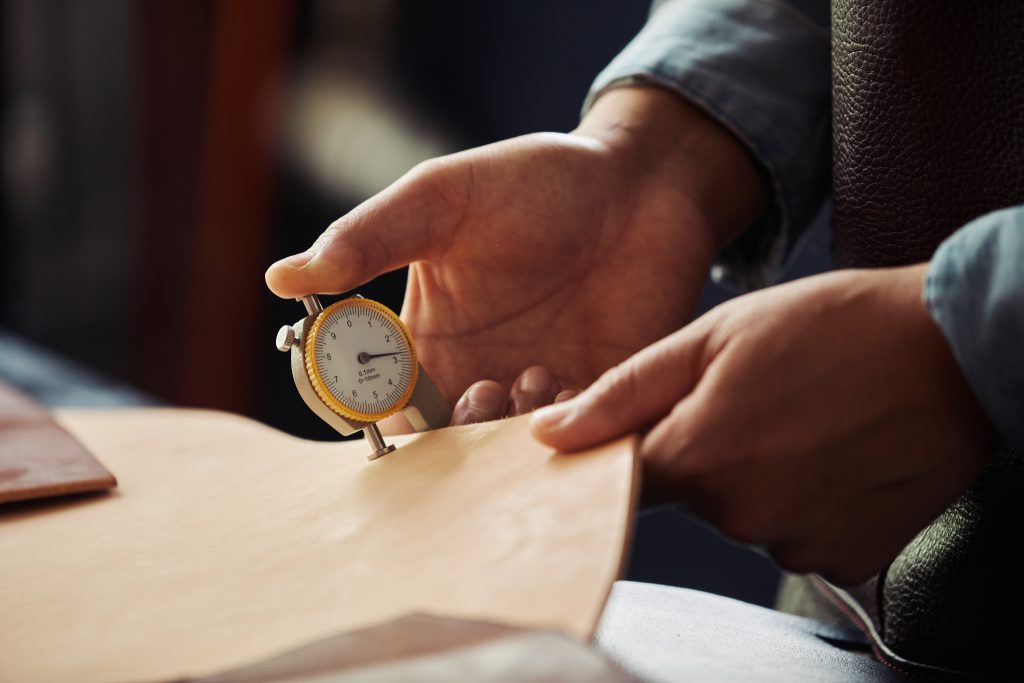
3.3.2. Color and Surface Finish Standards
The appearance of leather products is one of the most decisive factors in customer purchasing decisions. To ensure consistency and reliability, several internationally recognized standards apply:
- Colour Fastness to Light – According to ISO 105-B02, leather color must remain stable and resist fading under sunlight exposure.
- Colour Fastness to Rubbing – The ISO 11640 test ensures that color does not transfer onto clothing or skin during use.
- Uniform Finish – Visual and mechanical standards are applied to confirm evenness in texture, gloss, and color distribution across the product.
3.3. Chemical Safety Standards
With growing concerns over health and environmental safety, the control of hazardous chemicals in leather production is critical:
- Heavy Metal Restrictions – Compliance with permissible limits for Chromium VI, lead, and cadmium as required by REACH and OEKO-TEX®.
- Control of Volatile Organic Compounds (VOCs) and Formaldehyde – To prevent harmful impacts on human health and ensure consumer safety.
3.4. Packaging and Labeling Standards
For successful exports, compliance with packaging and labeling requirements is essential:
- Country of Origin Labeling – Mandatory in most international markets to ensure transparency.
- Protective Packaging – Must resist moisture, shock, and pressure, following International Safe Transit Association (ISTA) guidelines.
- Technical Product Information – Labels must include details such as material type, finishing method, care instructions, and obtained certifications.
Comparative Table – Technical and Quality Standards
| Category | Reference Standard(s) | Primary Objective | Export Relevance | Key Target Markets |
|---|---|---|---|---|
| Tensile Strength | ISO 3376 / ASTM D2209 | Prevent tearing during long-term use | High | Global |
| Abrasion Resistance | ISO 17076 | Enhance durability against daily wear | Very High | Global |
| Flex Resistance | ISO 5402 | Prevent cracking from repeated bending | High | Europe, USA |
| Colour Fastness to Light | ISO 105-B02 | Maintain appearance under strong light | High | Middle East, EU |
| Colour Fastness to Rubbing | ISO 11640 | Avoid color transfer to garments/skin | Very High | Europe, USA |
| Uniform Finish | Visual + Mechanical Assessment | Preserve aesthetic appeal and premium quality | High | Luxury Markets |
| Heavy Metal Restrictions | REACH / OEKO-TEX® | Protect consumer health | Very High | Europe |
| VOC/Formaldehyde Limits | REACH / OEKO-TEX® | Reduce health hazards | High | Global |
| Protective Packaging | ISTA | Safeguard products in transit | Very High | Global |
| Country of Origin Labeling | Local Regulations | Ensure transparency & legal compliance | High | Global |
Key Insight:
Adhering to these standards is not only necessary for customs clearance but also plays a direct role in brand building and buyer confidence. Leather products with verifiable compliance certificates stand a much stronger chance of securing large-scale export contracts and long-term partnerships.
4. The Role of Trust in International Buyers’ Decision-Making
In international trade of leather products, trust acts as the vital bridge between producer and buyer. Even the highest product quality, without lasting trust, cannot translate into long-term transactions or strategic partnerships. Foreign buyers—especially luxury brands, major retail chains, and bulk distributors—tend to ask one crucial question before discussing pricing: Can we trust this supplier?
Trust in leather exports is usually built on three fundamental pillars: information transparency, regulatory compliance, and proven track record of cooperation.
4.1. Transparency of Information and Documentation
International buyers look for evidence that validates the producer’s quality, authenticity, and accountability. Transparency should be established in several areas:
- Provision of official certificates: such as ISO 9001, LWG, REACH, or OEKO-TEX®, duly stamped and signed by the issuing authority.
- Third-party audit reports: independent assessments by accredited international laboratories or inspection companies.
- Technical test results: e.g., tensile strength (ISO 3376) or color fastness to light (ISO 105-B02).
Real-world example: An Italian luxury leather bag brand, before signing a contract with an Iranian manufacturer, requested certified test reports of raw materials from a European laboratory. These documents accelerated negotiations and established immediate credibility.
4.2. Compliance with Destination Market Regulations
Every export market imposes its own legal and technical requirements. Meeting these not only prevents customs-related complications but also strengthens buyer confidence:
- European Union: strict compliance with REACH chemical regulations.
- United States: focus on labeling and consumer safety requirements.
- Islamic countries: demand for Halal certification to verify production in line with Sharia principles.
Real-world example: An Iranian exporter seeking entry into Malaysia secured a Halal certificate and presented formal documentation. This step enabled them to sign contracts with several key buyers at the Kuala Lumpur International Trade Fair.
4.3. Proven Track Record and Successful Partnerships
A positive history of collaboration is a strong trust-building factor that reduces the buyer’s perceived risks:
- Client portfolio: even short-term cooperation with well-known brands significantly boosts credibility.
- Past projects and sample orders: showcasing successfully delivered contracts.
- Customer testimonials: publishing buyer feedback on websites or product catalogues.
Real-world example: A leather shoe workshop in Tabriz leveraged its prior supply experience in the Japanese market, along with documented positive customer feedback, to secure a substantial order from a German company.
Summary of This Section
Trust in international leather trade is the outcome of a synergistic combination: consistent product quality, transparent documentation, and strict compliance with market-specific requirements. A manufacturer who embraces these three pillars not only increases the probability of contract signing but also multiplies the chances of repeat orders and the establishment of long-term business relationships with global clients.
5. Comparative Table of Key Certifications in Leather Exports
This table is designed as a comprehensive quick reference to help leather exporters and manufacturers carefully identify the most suitable certifications based on target markets, legal requirements, cost, processing time, and added value.
| Certification Name | Application Scope | Core Requirements | Benefits & Added Value | Approx. Time to Obtain | Estimated Cost (USD) | Global Recognition Level | Key Target Markets |
|---|---|---|---|---|---|---|---|
| ISO 9001 (Quality Management) | All industries | Implementation of quality management systems, process control, documentation | Customer trust, process improvement, acceptance in most markets | 3–6 months | 1,500–5,000 | Very High | Global |
| ISO 14001 (Environmental Management) | Manufacturing industries | Reduce environmental impacts, energy/resource management | Access to green markets, brand positioning as responsible producer | 3–6 months | 1,500–4,500 | Very High | Europe, USA, Australia |
| ISO 45001 (Occupational Health & Safety) | Workshops & factories | Safe working environment, risk mitigation | Higher productivity, compliance with legal requirements | 2–4 months | 1,000–3,500 | High | Global |
| LWG – Leather Working Group | Tanning & leather processing | Water/energy use management, chemical control, waste management | Mandatory for luxury brands, proof of sustainability | 4–8 months | 3,000–8,000 | Very High | Europe, USA, Japan |
| SA8000 (Social Accountability) | Labor-intensive industries | Workers’ rights, child labor prohibition, fair working conditions | Social credibility, acceptance in ethical markets | 3–6 months | 2,000–6,000 | High | Europe, USA |
| REACH (European Union) | Export to EU | Elimination/control of hazardous chemicals (e.g., Chromium VI) | Customs clearance, mandatory for EU entry | 2–5 months | Variable (lab tests) | Very High | Europe |
| OEKO-TEX® Leather Standard | Consumer leather products | Elimination of harmful substances for human health | Consumer safety trust, higher sales | 2–4 months | 2,000–5,000 | High | Europe, USA |
| Halal Leather | Islamic markets | Slaughtering & tanning in compliance with Islamic law | Larger market share in Muslim countries, competitive edge | 1–3 months | 800–2,500 | Medium to High | Middle East, Southeast Asia |
| EU Ecolabel | European Union | Eco-friendly products, reduced environmental impact | Shelf differentiation in EU, green branding | 3–6 months | 1,500–4,000 | High | Europe |
| LCA – Life Cycle Assessment | All markets | Product lifecycle evaluation from raw material to recycling | Complete transparency, stronger eco-marketing | 4–6 months | 3,000–7,000 | High | Europe, USA |
Key Notes for Using the Table
- Certifications must be goal-oriented: always define the target market before pursuing any certification.
- Combining certifications enhances brand credibility. For example:
- Europe: REACH + LWG + ISO 9001
- Islamic markets: Halal + ISO 9001 + ISO 14001
- Luxury brands: LWG + SA8000 + OEKO-TEX®
- Plan financially: certification and annual renewal costs can be significant.
- Use professional consultants or export platforms such as MMF Market: they can accelerate the certification process and reduce costs.
6. Challenges in Obtaining Certifications for Leather Exports
While securing international certifications adds significant commercial and marketing value, the process is far from simple or inexpensive. For producers—particularly in developing countries—the path is full of obstacles that can slow down or even block entry into global markets.
6.1. High Costs
- Problem: Most certifications are issued by international bodies, and fees must be paid in USD or EUR. Beyond issuance, additional costs include auditing, staff training, and process improvements.
- Impact: Creates financial pressure on small and medium-sized enterprises (SMEs), weakening their ability to compete with major brands.
- Example: Obtaining LWG certification for a mid-sized tannery can cost more than USD 8,000.
6.2. Complexity and Time-Consuming Processes
- Problem: Preparing documentation, aligning production processes with standards, and scheduling audits can take several months.
- Impact: Delays in export contracts or missed opportunities at international trade fairs.
- Example: To obtain ISO 14001, some factories had to redesign their entire waste management system—a process lasting several months.
6.3. Need for Standard Infrastructure and Equipment
- Problem: Certain certifications require advanced technologies or substitute materials that may not be readily available in local markets.
- Impact: Increased capital investment and structural changes in production lines.
- Example: To comply with OEKO-TEX® Leather Standard, some tanneries had to completely replace specific tanning chemicals.
6.4. Alignment with Importing Countries’ Regulations
- Problem: Each country or region enforces its own set of rules, making simultaneous compliance with multiple systems challenging.
- Impact: Risk of shipments being returned at customs or facing heavy penalties for non-compliance.
- Example: A product prepared for Europe under REACH standards may still require additional labeling and safety warnings to enter the U.S. market.
6.5. Lack of Knowledge and Professional Consulting
- Problem: Limited awareness of technical and legal requirements, coupled with a shortage of specialists to manage certification processes.
- Impact: Wasted time and resources, or even rejection of certification applications due to incomplete documentation.
- Example: A leather footwear workshop in Tabriz failed its initial LWG audit due to missing documents and was forced to repeat the process.
Summary:
The path to certification is often costly, complex, and resource-intensive, requiring not only financial capacity but also technical knowledge, modern infrastructure, and expert guidance. For exporters, recognizing these challenges early and planning strategically—possibly by partnering with specialized export platforms—can significantly reduce risks and speed up market entry.
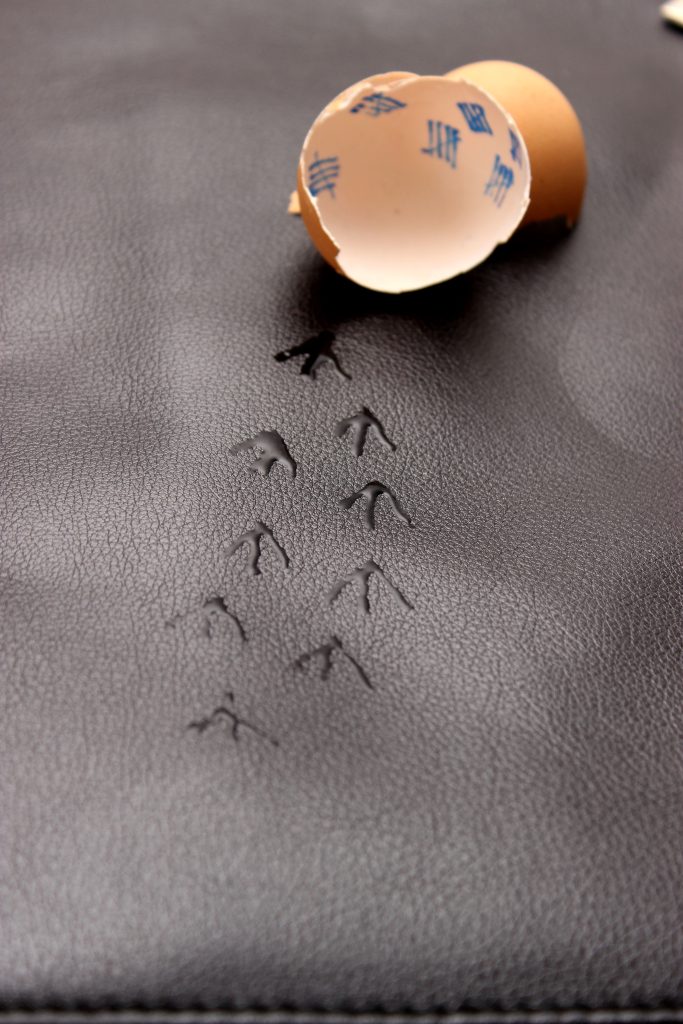
Table: Challenges – Impact – Suggested Solutions
| Challenge | Impact on Exports | Suggested Solution |
|---|---|---|
| High Costs | Limited ability to enter premium markets | Use government support programs; group registration via platforms like MMF Market to reduce costs |
| Process Complexity | Delays in delivery and missed opportunities | Employ export consultants; build an internal team dedicated to certification management |
| Need for Standard Equipment | Increased initial capital investment | Gradual equipment upgrades; joint purchasing with other producers |
| Regulatory Differences Across Countries | Risk of shipment return or confiscation | Analyze target market regulations before production; consult international trade legal experts |
| Lack of Specialized Knowledge | Rejection or delay in certification issuance | Staff training, participation in accredited online courses, collaboration with trusted intermediary firms |
7. Strategies for Success in Meeting Standards and Securing Certifications
Obtaining internationally recognized certifications for leather exports is a multi-stage, strategic process requiring technical, managerial, and financial readiness. Below are practical strategies for producers to navigate this path effectively and cost-efficiently:
7.1. Initial Assessment (Gap Analysis) and Identifying Needs
- Define target markets and identify their specific regulatory requirements.
- Conduct a Gap Analysis to identify differences between current production practices and required standards.
- Example: For exports to Europe, assess compliance with REACH regulations.
7.2. Step-by-Step Certification Planning
- Obtain certifications gradually, prioritizing those with the highest ROI and marketing impact.
- Example: For European luxury markets, start with a combination of LWG + ISO 9001.
7.3. Collaboration with Consultants and Specialized Firms
- Hiring export consultants can accelerate certification processes by up to 30%.
- Partner with platforms like MMF Market, which maintain direct links with accredited certification bodies.
7.4. Continuous Staff Training
- Organize internal and online training on certification requirements.
- Train quality control, procurement, and production managers for compliance.
- Example: Train QC teams to conduct in-house tensile strength tests (ISO 3376) before official audits.
7.5. Process and Infrastructure Improvement
- Upgrade production equipment and replace non-compliant raw materials.
- Implement digital documentation systems for better process monitoring.
- Use ERP or Quality Management software to enhance coordination.
7.6. Internal Audits Before Official Audits
- Form internal audit teams to identify and address weaknesses.
- Simulate audits using standard checklists.
- Advantage: Avoid repeated audits and reduce costs.
7.7. Leveraging Group Collaborations to Reduce Costs
- Group certification applications for joint audits, especially for LWG or SA8000.
- Pool resources to purchase OEKO-TEX® certified materials or REACH-compliant inputs.
Key Takeaway:
While certification processes can be challenging, structured planning, leveraging support networks, and collaborating with specialized export platforms can overcome most barriers—paving the way for access to high-value global markets.

Executive Checklist for Obtaining Leather Export Certifications
| Step | Key Action | Expected Output |
|---|---|---|
| 1 | Identify target market | List of mandatory and optional certifications |
| 2 | Conduct Gap Analysis | Report on gaps between current practices and required standards |
| 3 | Certification planning | Timetable and budget allocation |
| 4 | Select consultant or support platform | Signed contract with a specialized body |
| 5 | Staff training | Team familiar with certification requirements |
| 6 | Upgrade processes and equipment | Production line aligned with international standards |
| 7 | Internal audit | Corrective action report before official audit |
| 8 | Official audit | Valid international certification |
| 9 | Maintenance & renewal | Continuous compliance and export market retention |
8. The Role of MMF Market in Supporting Leather Export Certifications and Standards
Through a step-by-step and targeted approach, even small manufacturers can join the league of professional exporters with reasonable costs. Applying these strategies not only increases the chances of passing audits but also embeds a culture of quality and compliance within the organization.
MMF Market is a specialized, multi-dimensional platform for exporting Iranian leather products. It goes far beyond a traditional brokerage by combining expert consulting, international networking, and technical process management. This helps producers obtain global certifications faster, at lower costs, and with guaranteed alignment to international standards.
8.1. Specialized Consulting Based on Market Requirements
- Analyzing destination markets to identify mandatory and recommended certifications.
- Designing a certification roadmap prioritized by budget and ROI.
- Example: For the European market, MMF Market advises securing REACH + LWG, followed by ISO 9001.
8.2. Direct Access to Accredited Certification Bodies
- Introducing producers to internationally recognized organizations like TÜV, SGS, Bureau Veritas, Intertek, and LWG.
- Negotiating reduced costs and faster audit scheduling.
- Advantage: Eliminates unreliable intermediaries and prevents fake or invalid certifications.
8.3. Documentation Management and Preparation
- Providing certification-specific checklists.
- Assisting with collection, official translation, and standardization of technical and managerial documents.
- Example: For LWG, MMF Market structures records of water and chemical usage to ensure audit acceptance.
8.4. Pre-Audit Simulation
- Conducting trial audits to detect weaknesses before official inspection.
- Benefit: Minimizes the risk of certification rejection.
8.5. Cost Reduction via Group Collaboration
- Joint registration of multiple manufacturers for shared audits.
- Collective purchase of OEKO-TEX® certified or REACH-compliant raw materials.
- Result: Up to 30% cost savings.
8.6. Post-Certification Support
- Annual renewal monitoring and compliance updates.
- Marketing guidance to leverage certifications in catalogs, websites, and negotiations.
- Example: MMF Market integrated LWG and OEKO-TEX® logos into a leather bag exporter’s packaging, boosting buyer trust.
8.7. Synergy Between Technical and Commercial Services
- Combining technical support (certifications) with commercial services (international buyers).
- Ensuring certifications are not just documents, but powerful sales tools.
Why MMF Market is a Competitive Advantage for Iranian Leather Exporters
- Direct access to global buyers and certification bodies
- Hands-on experience in aligning production with strict international standards
- Reduced time and cost for entry into premium markets
- Higher chances of long-term contracts with reputable buyers
Final Message
In today’s global leather market, certifications are no longer optional—they are essential for survival and growth.
- Quality certifications like ISO 9001 and ISO 14001 are entry tickets to professional markets.
- Sustainability standards such as LWG and EU Ecolabel are crucial for luxury brands and conscious consumers.
- Ethical certifications like SA8000 and Fair Trade enhance brand reputation.
- Industry-specific certifications such as REACH, OEKO-TEX®, and Halal Leather are keys to niche markets.
The path to certification may be costly and complex, but with structured planning, expert consulting, and the MMF Market platform, exporters can overcome barriers and establish themselves in high-value global markets.
Takeaway:
Manufacturers who invest in certifications today not only unlock global opportunities but also position their brand as a trusted, world-class name in the leather industry.
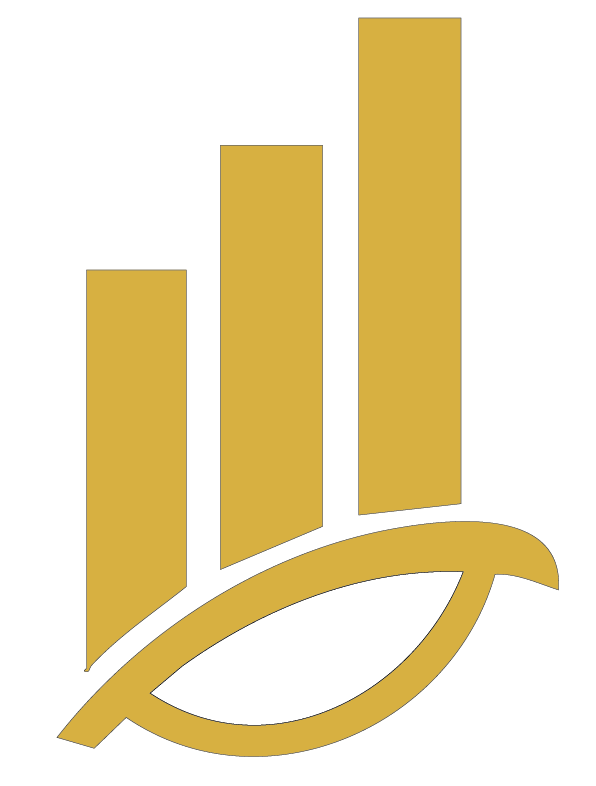
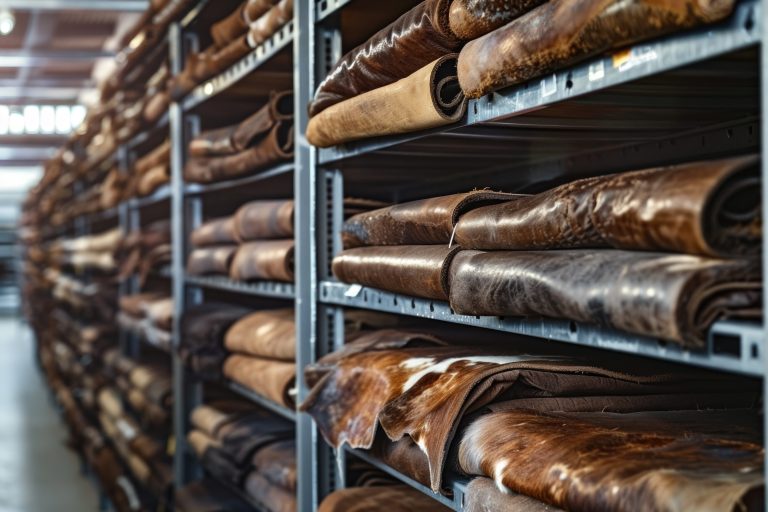
No comments yet.